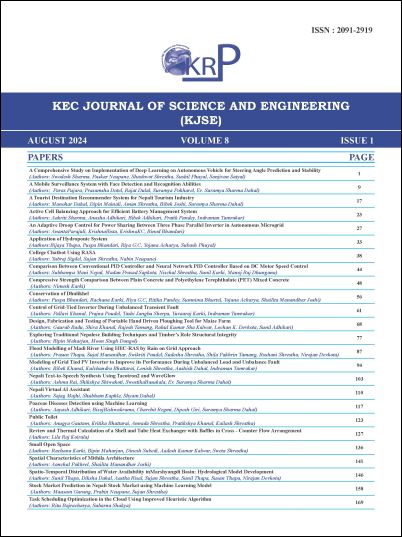Nepali Virtual AI Assistant
DOI:
https://doi.org/10.3126/kjse.v8i1.69277Keywords:
AI, IoT, Speech recognition, Node MCU, WiFiAbstract
With the development of Artificial Intelligence (AI), much of our regular redundant work that does not require critical thinking is replaced by machines. The scope of the Internet of Things (IoT) is also increasing due to AI. IoT acts as a suitable platform for the application of AI in real life. In this paper, we present a Virtual AI Assistant that combines AI with IoT. Our system uses an ESP8266 (Node MCU) chip as the core microcontroller for the home automation application. It is an IoT-compatible microcontroller with a cloud connectivity feature that is accomplished with the help of WiFi (Wireless fidelity). This allows home appliances such as lights, fans, rice cookers, etc. to be controlled by desktop or mobile applications from any part of the world. Our system uses speech recognition as its primary source for controlling the application. The speech recognition feature can detect and distinguish people’s voices which is a handy feature in terms of security and privacy. Other than IoT, software features such as note-making, application initiators, web navigation, and automatic typing through speech recognition are also implemented in this system. Our work also makes use of the Nepali language for IoT applications for switching home appliances on and off. The AI model was trained from scratch manually for the Nepali language as proper audio datasets for the Nepali language are not available. Our work in the development of Nepali Virtual AI Assistant is to integrate hardware and software with AI to create user-friendly automation and ease in people’s daily lives.




